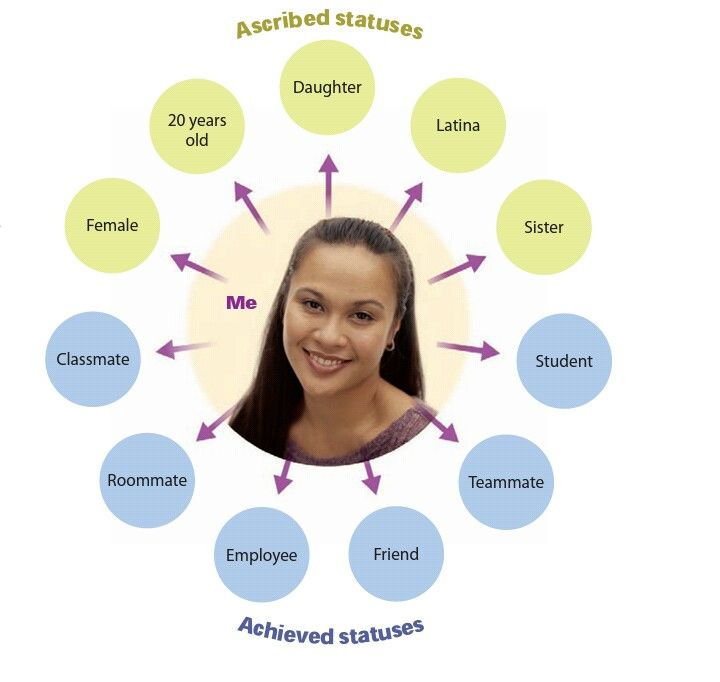Understand your society 101: SOCIAL STRUCTURE AND ITS ELEMENTS IN OUR EVERYDAY INTERACTION Part 1
In our everyday lives, we face social realities. Most times, we are aware of them, but have little understanding about them. Sometimes, we understand them but find it difficult to express them. For instance, our social class determines the type of people we relate with and the kind lifestyle we live or people in a particular position (status) have behavioural patterns and obligations required of them. We are aware of this; it is a social reality, but sometimes we have little understanding about them or the right words to express them. Therefore, we use concepts to capture these social realities and to express them for our own understanding.
Welcome to my blog. Grab your seat, as I will be explaining some of the various concepts that capture our social realities for a better understanding of our society.
Imagine a society where people do not interact, where there is no one you can call your family or friend, where people in the society just live and do whatever they like, where people do not have any form of connection with one another. Or, a society where people care less about the result of their actions; whether other people get hurts or not means nothing to them. It will be a very boring and chaotic society and the society is bound to collapse. Hence, a structure is needed to ensure we have a stable and sustainable society.

Every society is made up of individuals, groups, institutions and many other components. It is pertinent that these components interact for the sustenance of the society. There are several ways we construct the social word around us. We use our social interactions with others and the components of the society to make sense of and give purpose to our lives and that of those around us. source In fact, social interaction among the people and some of the various components of the society is inevitable. This interaction occurs within the framework called social structure , which gives us hints on how to behave.
The term social structure refers to the way in which a society is organized into predictable relationships(Schaefer, 2013). It is the pattern of relationship among the basic parts of the society and the framework of the society that was already in existence since time immemorial. We interact with our fellow human the way we do because it has been structured that way in order to ensure orderliness. People in the society act within the social structure available to them in the society and it shapes what they do. This is why an individual who is a boxer by profession knows that he is not expected to box a fellow man outside the boxing ring. It is the same reason we have the family institution as the primary unit for procreation and raising of newly born individuals. We can then; state that social structure influences individuals in the society, and establishes limits for them. There are various elements of social structure, and all these elements are in place to ensure that the society is in order, lively and sustainable. These elements are Culture, social institution, social class, social norms, social values, social status, and social roles and so on. For the start, I will be concentrating on the status and social role.
When we talk about status, what comes to many people’s mind is, a person with wealth, influence and fame. However, this is very not true. Status refers to the socially defined position an individual occupies in a group and in the society or the position of a group in relation to another group. Within a society, every individual occupies one status or another, in fact, it is impossible not to belong somewhere. For instance, a newly born male child has a social status (position) immediately at birth. He is a male child, a son to his parent, a grandson to his grandparent, a newly born citizen to his country, a cousin, nephew etc. Therefore, your social status talks about your position in the society, whether in your family, country, place of work, group and so on. An individual can occupy more than one status at a time, for instance, a man’s status can be that of a president, a lawyer, a son, a father, a businessperson etc. simultaneously. A good example is Donald Trump who occupies all the aforementioned status. Therefore, you as a person can occupy the position (status) of a son or daughter to your parent, father or mother to your children, doctor or nurse to your patient, teacher to your students, pastor to your congregation etc at the same time.
Every status carries with it a set of duties and privileges. Some status attracts more honours, privileges than others do, while some impose more responsibilities, and duties on its occupants than others do. For example, a person occupying the status of the president has more honour and privileges to his position in comparison with an individual occupying the status of a clerk. In the same vein, a person occupying the status of a doctor has more responsibilities and duties in comparison with an individual occupying the status of a receptionist. We are addressed in the society based on the status we occupy and status affects our actions and those around us. For example, a man occupying the status of a policeman is expected to uphold the law and not break it. Parents are also expected to guide their children on how to behave in the society and on a career path; children are expected to respect their parents. In other words, regardless of your status whether as a father or son, status provides guidelines for how we are to act and feel. There are various elements of status; they are status set, ascribed and achieved status, master status etc.
Status Set : As stated earlier every individual in the society occupies several positions (status) at the same time. An individual can simultaneously be a father, son, nephew, a policeman, a priest and husband. These sets of statuses are referred to as a status set. A status set is all the statuses and positions an individual occupies at the same time. Therefore, if you are a teacher, and at the same time a husband to your wife, father to your children, pastor in your church and so on, all these sum up to be your status set.
Take a look at yourself, what status do you occupy and how many statuses are you occupying at the same time. Can you list them? How do they influence the way you act towards other people and how other people act towards you? What privileges and honours do these statuses bestow on you?
Ascribed and Achieved Status : When you look deeply into the various statuses you occupy, you will realize that you were born with some status while you achieved some. Thus, social status is of two kinds, the ascribed statuses and achieved statuses. An ascribed status is assigned to a person by society without regard for the person’s unique talents or characteristics (Schaefer, 2013). Ascribed status is inherited by birth and it includes sex, race, ethnicity, social class of parent as well as status as a son, daughter, nephew, niece, male, female, black, white, prince or princess in a royalty hereditary. We can also specify that ascribed status is given to an individual on a ground he/she has no control over. In other words, your statuses as a male child, first son, Yoruba man, African man, African American man, tall man, fair looking man and so on are ascribed.
On the other side of the coin, Achieved status is the social ranking, which is acquired by an individual by choice and through personal effort and hard work. Therefore, the status you achieved by virtue of your occupation or profession is an achieved status. It is achieved because you attained it through your hard work, effort and performance. Also, statuses obtained through laziness, indolence and breaking the law are achieved status. People’s status as doctor, lawyer, president, student, farmer, Lecturer, professor, actor, musician and so on are achieved status.

Image source : R.Schaefer, Sociology a brief introduction.
Asides the listed status above, what other statuses do you think are achieved and ascribed
Master Status : Most time we get our social identity through our status. However, the fact that we occupy so many statuses at the same time means there are arrays of statuses available to members of the society to determine our social identity, which may be conflicting. Nevertheless, among these statuses, one always stands out as the most dominating or more recognized status which overshadows the rest of the statuses. This status is significant in that it determines an individual’s social identity. This is the master status.
A Master status is a status which overshadows the rest of the statuses an individual has. It is the status that gives the individual his social identity. Thus, for some people, their professional or occupational status is their master status; for example, some people are mostly known as a pastor, engineer, farmer, lawyer, senator etc. While for others, their family status is their master status (father, mother, son, nephew, niece, son, daughter) and for some people, their criminal status as a prisoner or ex-convict supersedes all other statuses. Similarly, people who become disfigured may find out that their condition becomes a master status. For example, a person whose face is scarred from severe burns may be viewed through this unwelcome master status regardless of their occupation or accomplishments (Henslin, 2011). It can also be seen this way, some master status is ascribed, for example, our gender, it can also be achieved, for example, if a man becomes very wealthy from a hit song, his wealth becomes his master status. Hence, people may refer him to the wealthy musician.
Now that you know your statuses, can you identify your master status? What is it?
For our society to function properly for the sustenance of the whole, every individual has a role to play and there are expectations from every individual. In the same vein, every social position (status) has some behaviour and expectations attached to them. This is Social Role. Social role refers to the behaviours, expectations and obligations normally associated with a given status. Every status an individual occupies in the society has some sets of behavioural pattern, expectations and obligation attached to it. Status goes with a role, but the difference between them is that you occupy a status while you play a role. Hence, whenever you occupy a status, you are confronted with a set of behaviour embodied in that status. For example, your status as a university professor imposes upon you behaviours and obligation to conduct lectures, administer examination, grade students’ script, conduct academic research, respond to students when they ask questions etc. Similarly, your status as a student bestowed on you the role to attend classes, take notes, do homework, and take tests. On another note, being a father is your status, but your role is to provide food and shelter for your family. Imagine a society where all the statuses have no role attached to them. Yes, it will be a very confusing society. This shows the importance of social role, in fact when a social position fails in its role, it affects the society.
In addition, for every role, there are associate status and roles, which behaviour of a particular status is directed. Therefore, the behaviours associated with a particular status are to be directed to the occupants of another status. These are your role partner. The role of a doctor can only make sense when referenced to a patient. Likewise, the role of a lecturer will be meaningful when in referenced with students. In other words, a social role cannot be defined in isolation except when referenced with other specified status and role.
Role Partner : A role partner is an individual with which you perform your role. For example, the role partner of a doctor is the patient. An individual in a given role will have many role partners to deal with simultaneously. Hence, the father role position has the wife, the children, the children’s friend, the children’s teachers, the neighbours, the family doctor, and his friends etc. as role partners. All these partners will relate to him and respond to him according to roles they play for him or he plays towards them. Therefore, the wife, the children’s teacher and the children’s friend will relate to him as the father of the children with whom they are interacting rather than anybody or anything else he is.
Role Category : This refers to the collection or set of people who occupy the same positions and play the same role. For example, all females that are married occupy the position of wife and all married male occupies the position of husband.
Role Strain: Role strain refers to the difficulties an individual experience in performing a particular role. An example is a father who is the breadwinner of his family; however, he is unable to secure a job to make enough money to provide for his family. Another example is a woman who works in the bank and at the same time a mother. She may experience role strain if the demand of her work prevents her from performing her duty as a mother.
Role Conflict : The fact that you occupy more than one social position means roles attached to such positions are bound to be in conflict. Hence, role conflict occurs when two incompatible expectations arise from two or more social positions held by a person at a time. A good illustration is a man who is both a policeman and a father. In his duty as a policeman, the need may arise for him to arrest his son, but his role as a father may prevent him from effecting such arrest because the role expectation of a father necessitate him and imposes on him the duty to protect his child. At this point, the expectations of the two roles have clashed and this is known as role conflict. This kind of role conflict calls for important ethical choices. Now take a moment to think of how you experience role conflict in your daily lives.
There are more elements of the social structures which include social norms, social class socials values, culture, social institutions and so on. Many of these elements are broad and may require being a stand-alone topic; however, in my subsequent post I will be explaining them.
I hope you have all learnt something new today. Have a great day.
References
Schaefer,R (2013). Social interaction, groups, and social structure. In R.Schaefer, Sociology a brief introduction. New york: McGraw Hill companies,inc
Henslin,J.M(2011). Social Structure and social interaction. In J.M Henslin, Essentials of sociology. PearsonEducation, Inc.

impressive / good work
Thank you.